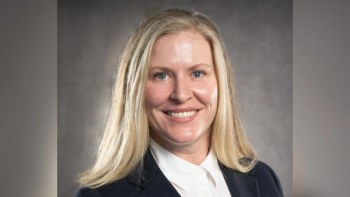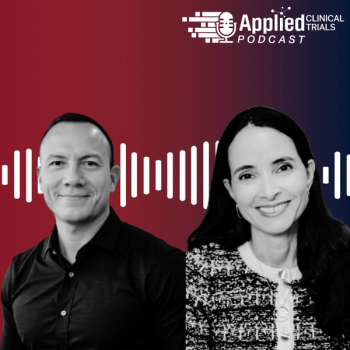
- Applied Clinical Trials-05-01-2012
- Volume 21
- Issue 5
Recruitment Drivers
Cancer trial recruitment is struggling-adult participation is limited.
Advances in cancer treatment rely on accurate data from clinical trials. However, in light of a complex interplay of factors, between just 2% and 5% of adults with cancer enroll in clinical trials. As cancer treatment continues to move toward more targeted therapy and personalized medicine, progress in drug development becomes a double-edged sword. Although these modern therapies are more likely to induce positive responses for the right people-and less likely to induce severe toxicities-protocols must be targeted to increasingly specific sub-populations of cancer patients. These trends, paired with the corresponding rising number of oncology protocols, contribute to the growing challenge of patient recruitment. For example, pharmaceutical and biotech companies must now conduct more and more trials overseas, making recruitment more complex and expensive. Setting aside logistical, administrative, regulatory, and protocol requirements that are unlikely to change, the most effective way to increase participation in clinical trials will involve new and unique communication strategies.
A myriad of factors may influence a patient's decision to enroll in a clinical trial. Several studies have shown that the most important factor is the patients' perceived benefits to themselves; patients are three to five times more likely to enroll if they believed there might be a personal benefit for enrolling.
About 80% of patients would enroll in trials if the decision to join were easy, if they did not expect standard therapies to succeed, and if the physician believed in the importance of the trial. Interestingly, 94% of patients surveyed believed that they had enough information to decide about enrollment.1 These findings suggest that increased perceived benefit, rather than increased knowledge, may be the best course to increase patient enrollment in clinical trials.
Improving patient understanding of perceived benefit, in an ethical and non-coercive manner, begins at the physician level. In a study examining patient-oncologist interactions, physicians failed to offer enrollment in an appropriate clinical trial for 76% of interactions; in 43% of those interactions, the trial was never mentioned at all.2 Physicians may simply forget to mention trials, may prefer providing FDA-approved off-label treatments, or may anticipate time and data collection burdens for themselves and their staff even when patients are eligible and could benefit from the therapy. On average, doctors must spend four hours with each patient who might enroll in a trial.3 These factors may lead potential investigators to not encourage participation in their trials, which makes patients less likely to participate.
Garnering support from physicians requires sponsors to make an investment at the site level, in addition to other complementary strategies. First, sponsors must help minimize the recruitment burden. Providing quick reference tools can allow for rapid patient identification, screening, and randomization. Providing direct support for referral source communication fosters camaraderie with colleagues and support groups. Second, sponsors must open up communication with their sites by developing comprehensive communication plans with their study staff. At a minimum, these plans must include regular and robust communication regarding updates on enrollment, observations from sites, and any preliminary results. Additionally, creating a sense of study community may bolster feelings of support among the investigators. Establishing regular touch points through in-person, teleconferences, and/or webinars, as well as through eNewsletters or other electronic updates, can generate ongoing enthusiasm about the trial.
MMG has experienced dramatic increases in patient enrollment when implementing such programs. For instance, the company deployed a comprehensive communications program for a chemotherapy side-effects study that had only five months remaining in the enrollment period. Materials for patients and research staff were provided, monthly newsletters distributed, regular teleconferences held, and a program recognizing the efforts of hard-working study staff was established. When comparing sites that received this support with a control group of sites that had not, the sites receiving support realized an overall recruitment rate of 1.09 patients per site per month, and sites not receiving support saw a rate of 0.37 patients per site per month; the difference in overall rates was nearly 200%. If these methods had been employed for the entire enrollment period, recruitment could have been significantly higher overall.
With physicians and site staff on board, communicating clearly with patients represents the final piece of the puzzle. At the time of diagnosis, only 10% of cancer patients are aware of oncology clinical trials.4 Patients must learn about trials in an optimistic, non-coercive manner. Study materials must address and effectively mitigate patients' concerns about enrolling in trials, including a common misunderstanding of randomization, fear of acting as a "guinea pig," and burdens of cost and convenience. These anxieties contribute to patient refusals for participation.5 By the same token, communicating clearly and optimistically about trials may make participation more appealing. For example, having materials describe five-year survival rates, rather than median survival time, may project a more complete picture of disease progression and the possibility of a durable response, however small. Providing study staff with communication tools enables them to share study information with their patients, alleviating some time burden on study staff and fostering alliance-building between physicians and their patients, increasing the likelihood that patients will enroll in trials. Patient recruitment is most successful when information flows fluidly among all parties: patients, physicians, site staff, and sponsors.
Jeff Goldfarb is VP Oncology at MMG, 700 King Farm Boulevard, 5th Floor, Rockville, MD, e-mail:
References
1. J. R. Wright, T. J. Whelan, et al., "Why Cancer Patients Enter Randomized Clinical Trials: Exploring the Factors that Influence Their Decision," J Clin Onc, 22 (21) 4312-4318 (2004).
2. T. L. Albrecht, S. S. Eggly, et al., "Influence of Clinical Communication on Patients' Decision Making on Participation in Clinical Trials," J Clin Onc, 26 (16) 2666-2673 (2008).
3. E. G. Mansour, "Barriers to Clinical Trials. Part III: Knowledge and Attitudes of Healthcare Providers," Cancer, 74 (Suppl. 9) 2672–2675 (1994).
4. R. L. Comis, D. D. Colaizzi, and J. D. Miller, "Barriers to Cancer Clinical Trial (CCT) Participation: 'We Have Met the Enemy and he is us,'" J Clin Onc, 25 (18S) 6567 (2007).
5. L. A. Siminoff, "Why Learning to Communicate with our Patients is so Important: Using Communication to Enhance Accrual to Cancer Clinical Trials," J Clin Oncol, 26 (16) 2614-2615 (2008).
Articles in this issue
over 13 years ago
Applied Clinical Trials Digital Edition - May 2012over 13 years ago
Ethics is all the Rage in Europeover 13 years ago
It's All Change at the Top for EMAover 13 years ago
Mentoring New Employeesover 13 years ago
HTAs: Using Endpoints in Clinical Trialsover 13 years ago
Real-World Clinical Testing Challengesover 13 years ago
Are Phase Labels Still Relevant?over 13 years ago
FDA's Safety Data Collection Draft Guidanceover 13 years ago
A Financial Case for Loyalty Managementover 13 years ago
Enrollment Performance: Weighing the "Facts"Newsletter
Stay current in clinical research with Applied Clinical Trials, providing expert insights, regulatory updates, and practical strategies for successful clinical trial design and execution.






.png)



.png)



.png)
.png)
